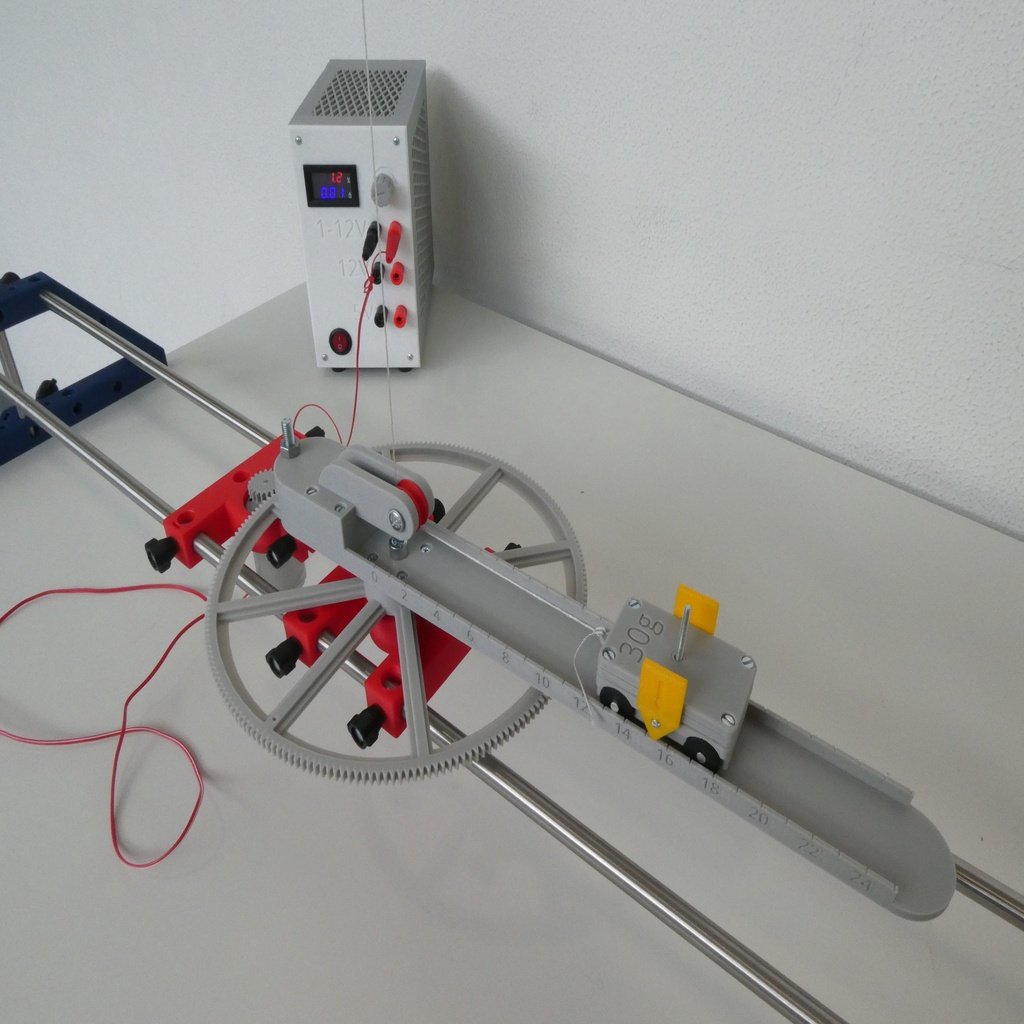
Measurement of the Centripetal Force
thingiverse
Measurement of Centripetal Force Centripetal force measurement is a fundamental experiment in physics classes for high school students. For years, we had only one experiment in our school that the teacher would demonstrate to the class. This was not an ideal learning experience for students. They should be able to conduct their own experiments and learn from them. That's why I developed this experiment and printed it six times. Now my 24 students can perform their own measurements. Using their smartphones, the students measure the time for ten turns. Modern smartphones are capable of taking excellent photos even at high speeds, making it easy for students to determine the radius. Some components shown here are also part of my project "Laboratory Equipment for Teaching STEM in Schools." For example, you can find instructions on how to assemble the screws and other information under https://www.thingiverse.com/thing:3433683. To print these parts, a printer with a bed size of at least 300mm x 300mm is required. Most of these parts can be printed without any support. ### Components <b>27_central_gear_for_centripetal_measurement.stl:</b> This large gear has 200 teeth, module 1. Two ball bearings 606Z (6x17x6) are pressed into the center from both sides. Four nuts M3 are pressed into the corresponding openings. <b>29a_roadway_for_centripetal_measurement.stl:</b> On the short side of this roadway is a cavity that can be filled with weight to achieve the desired mass. This roadway has a central bore and four mounting holes for screws. The roadway can be printed without any support. <b>28a,b,c,d,e_gear_10,20,30,40,50 teeth.stl:</b> Five gears with 10 to 50 teeth, module 1. I recommend the gear with 20 teeth. The central hole still has to be carefully adapted to the axle diameter of the electric motors. <b>04b_clamb_extension_with_center_hole.stl:</b> An extension of 04b_clamb_extension (see https://www.thingiverse.com/thing:3433683) with a central bore. This part is almost unbreakable with a filling of 80%. <b>24_angle_clamp.stl:</b> A clamp with which two tripod bars (10mm) can be very firmly connected at right angles. <b>30_mount_for_hook.stl:</b> On one side, a tripod bar is clamped, and on the other, a ring bolt M4 is screwed in. In addition, the eyebolt can be secured by a nut M4 and a thin knob (see https://www.thingiverse.com/thing:3481788). <b>cart_for_centripetal_measurement.stl:</b> The cart has a central bore for a washer with a diameter of 25mm, a thickness of 1.2mm, and a bore of 5.3mm. This washer weighs about 4.2g. If you print the car with a filling density of 25%, then the entire cart with all attachments, screws, nuts, and washers weighs almost exactly 30g. <b>pointer_for_cart.stl:</b> This pointer is fixed with a M2 screw exactly in the middle of the cart. <b>wheel_for_cart.stl:</b> The wheels for the cart. As an axle, I used an aluminum rod with 4mm diameter and a length of 32.5mm. <b>weight_30g.stl:</b> Both parts (with an infill of 25%), together with four screws M3x6, four nuts M3, and four washers with a diameter of 25mm, a thickness of 1.2mm, and a bore of 5.3mm, weigh almost exactly 30g.
With this file you will be able to print Measurement of the Centripetal Force with your 3D printer. Click on the button and save the file on your computer to work, edit or customize your design. You can also find more 3D designs for printers on Measurement of the Centripetal Force.
